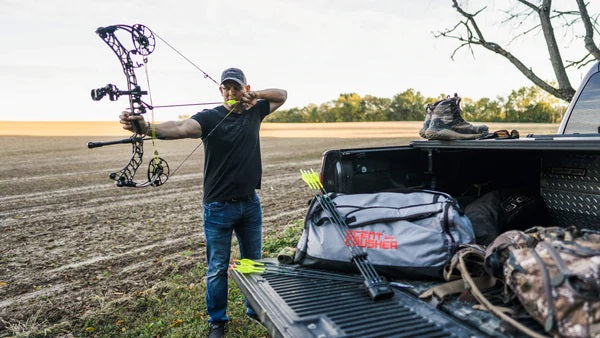
A blood trail can tell you a lot about the efficacy of your shot. Check out our tips below to decipher where your shot landed, how severely the deer was wounded and what your next step should be.
Pay Attention to the Color of the Blood
The deer’s blood will have a different hue depending on where your shot landed. Pink, frothy blood indicates a shot to the lungs. Green blood suggests a shot in the stomach. Vibrant red blood indicates a shot to the heart. Dark red blood shows that the deer was shot in the liver. Once you’ve determined the color of the blood, you can calculate how long you should wait before pursuing.
Pay Attention to the Time
If your shot didn’t land in the vital organs as you’d planned, the deer will likely take longer to pass so you need to give the deer time and space before pressuring it. If you start your pursuit too soon, you’ll spook the injured deer and cause it to run further away from you.
If you’re confident you’ve hit the deer in the heart or through both lungs, you only need to wait up about an hour or two from the time of the shot. The deer most likely didn’t go very far and is probably already down. Other vital shots like one lung or the liver call for waiting up to six hours. If you hit the deer in the stomach, you should wait up to 12 hours if possible.
Consider the Weather
It is a gamble to wait 12 hours to recover your deer because you could risk the meat spoiling, so weigh your options against the current weather. If you shoot a deer when it’s 80 degrees, it might not be wise to wait the full 12 hours. If you make your shot when the temperatures are consistently below 40 degrees, it may be safe to wait longer.
Identify the Pattern
Pay attention to the patterns of the blood splatter. If the blood is all over each side of the trail in a haphazard pattern, the deer was likely running sporadically and therefore close to expiring. If the blood is in a straight line on the ground, then the deer was walking and could merely be wounded.
Make Sure You’re Using Sharp Blades
To be clear: making an ethical shot is largely dependent on the shot placement, but a sharp broadhead can help increase the odds. Our broadheads are engineered and designed to make ethical shots using our Flexcut™ and Momentum Management technology. Our new broadheads, like the Ranger and Commander models, open through inertia deployment. Inertia is a principal of physics that states that any physical object will resist a change in velocity and will continue to move in a straight line at a constant speed unless an outside force acts upon it. When you come to a quick stop in a car, you move forward, and you would have continued moving forward if your seatbelt hadn’t stopped you through inertia. The seatbelt has a locking system that springs into place and doesn’t allow the seatbelt to give.
When the tip of our broadhead touches the target, in this case the animal, the inertia pin shoots forward inside the ferrule, causing the blades to spring open. This ensures that the broadhead will go into the target smoothly and the blades won’t deploy until it has already landed in the animal. Once it enters the animal, the blade will spring open, increasing the odds of damage and therefore increasing the odds of an ethical shot.
Keep these blood trailing tips in mind on your next hunt and use these guidelines to help you investigate your shot. Remember that proper shot placement is what makes a shot quick and ethical. Increase those odds by hunting with our innovative broadheads.
What tips do you have for tracking a blood trail? We’d love to hear from you!




Leave a comment (all fields required)